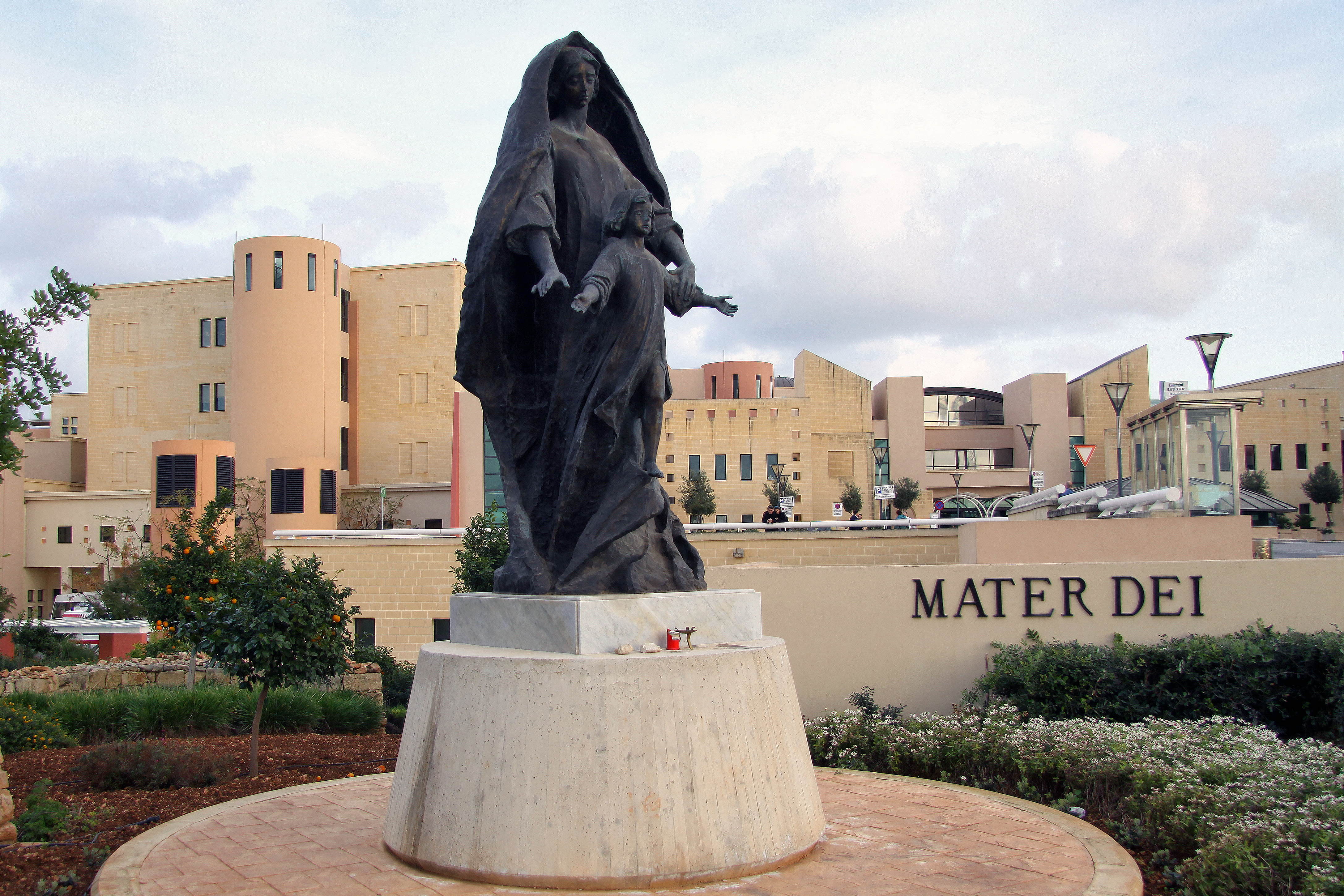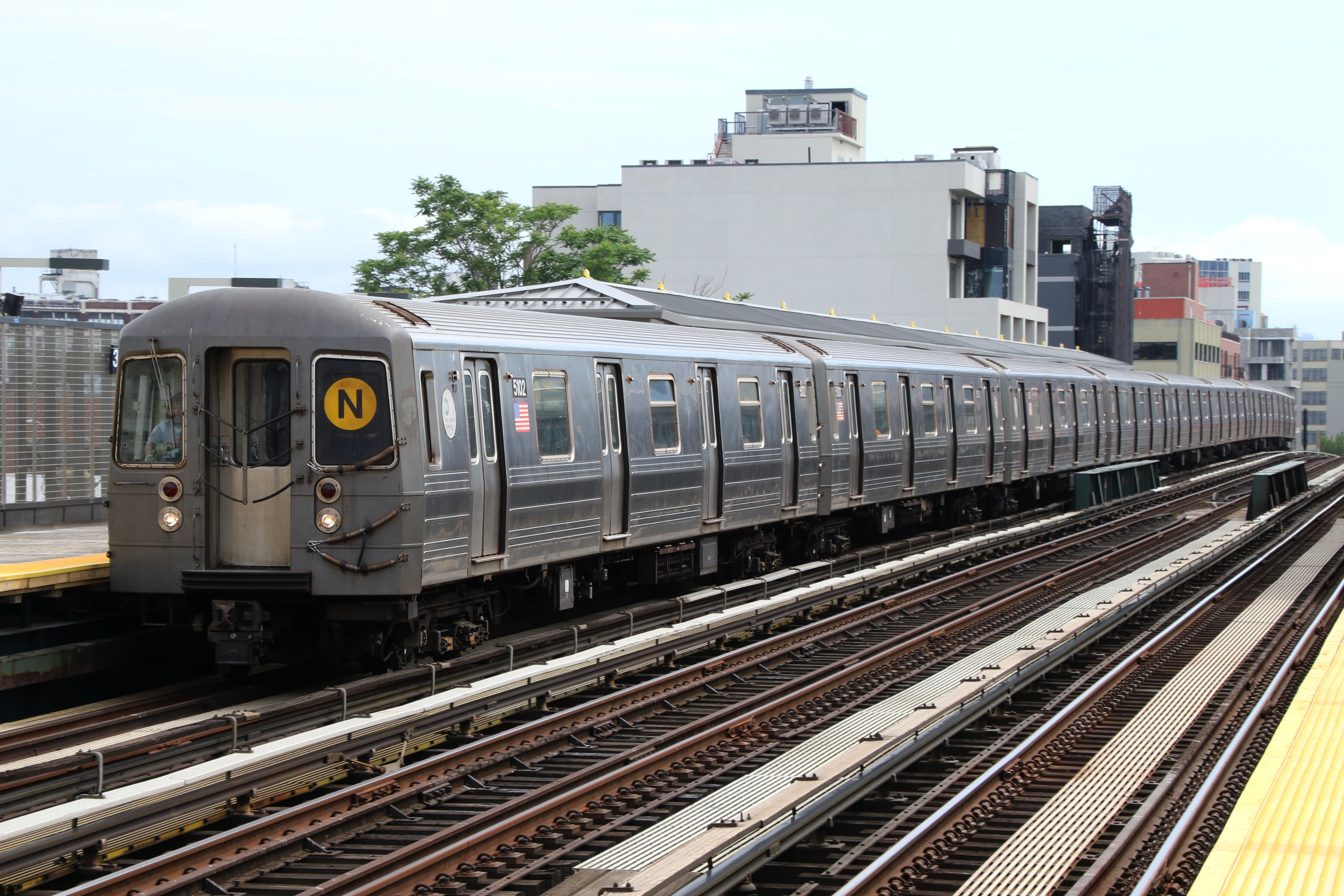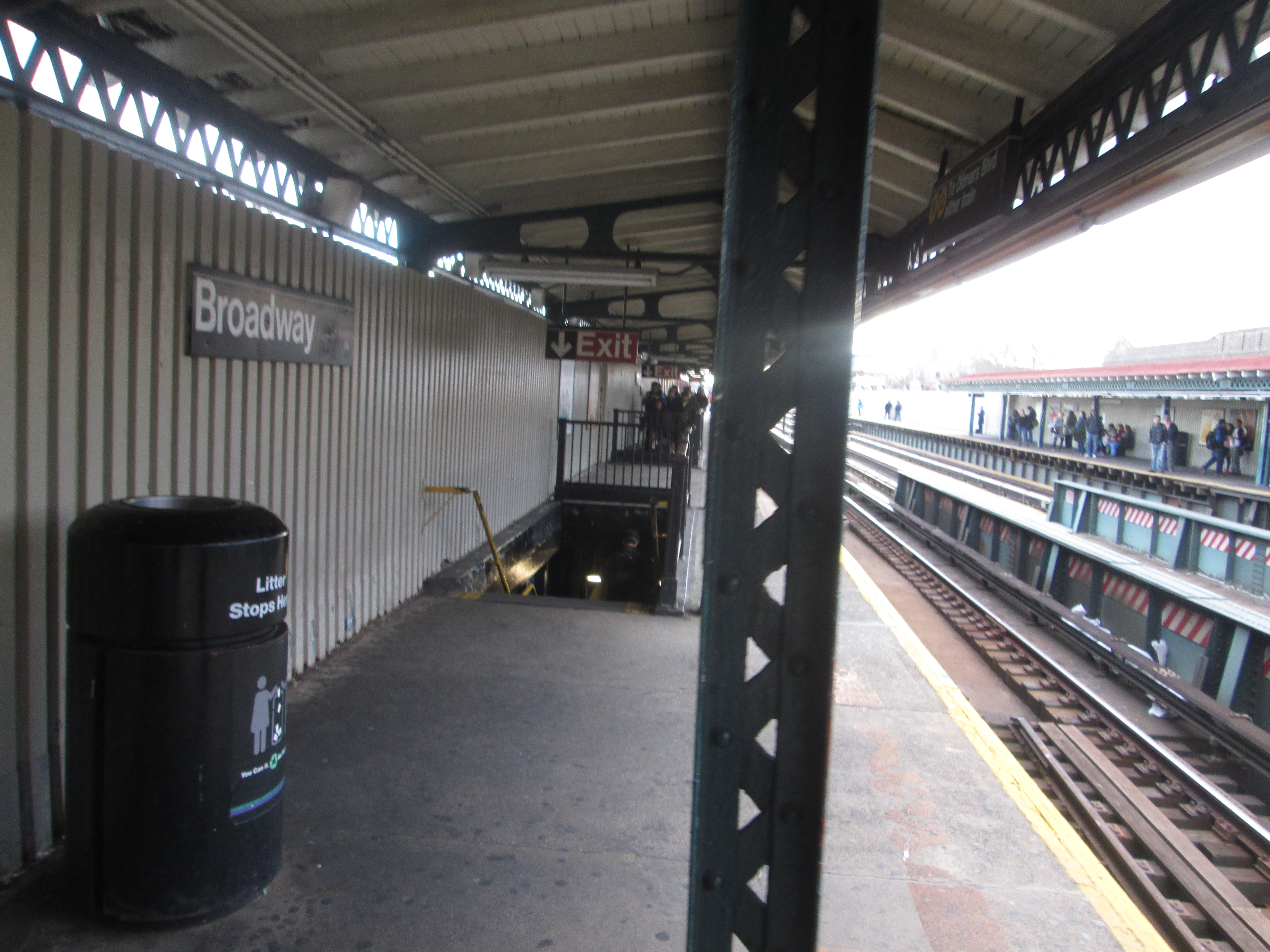|
30th Avenue (BMT Astoria Line)
The 30th Avenue station (formerly 30th Avenue–Grand Avenue station) is a local station on the BMT Astoria Line of the New York City Subway. It is located at 30th Avenue and 31st Street in Astoria. The station is served by the N train at all times, as well as by the W train on weekdays. History This station opened on February 1, 1917, along with the rest of the Astoria Line, which was originally part of the IRT, as a spur off the IRT Queensboro Line, which is now the IRT Flushing Line. Trains ran between Grand Central and Astoria. On July 23, 1917, the Queensboro Bridge spur of the elevated IRT Second Avenue Line opened. At that time, all elevated trains to Queensboro Plaza used the Astoria Line while all subway trains used the IRT Flushing Line, though this was later changed with trains alternating between branches. This station started to be served by BMT shuttles using elevated cars on April 8, 1923. The city government took over the BMT's operations on June 1, 19 ... [...More Info...] [...Related Items...] OR: [Wikipedia] [Google] [Baidu] |
Queens
Queens is a borough of New York City, coextensive with Queens County, in the U.S. state of New York. Located on Long Island, it is the largest New York City borough by area. It is bordered by the borough of Brooklyn at the western tip of Long Island to its west, and Nassau County to its east. Queens also shares water borders with the boroughs of Manhattan, the Bronx, and Staten Island (via the Rockaways). With a population of 2,405,464 as of the 2020 census, Queens is the second most populous county in the State of New York, behind Kings County (Brooklyn), and is therefore also the second most populous of the five New York City boroughs. If Queens became a city, it would rank as the fifth most-populous in the U.S. after New York City, Los Angeles, Chicago, and Houston. Approximately 47% of the residents of Queens are foreign-born. Queens is the most linguistically diverse place on Earth and is one of the most ethnically diverse counties in the United States. Queens was est ... [...More Info...] [...Related Items...] OR: [Wikipedia] [Google] [Baidu] |
IRT Second Avenue Line
The IRT Second Avenue Line, also known as the Second Avenue Elevated or Second Avenue El, was an elevated railway in Manhattan, New York City, United States, from 1878 to 1942. It was operated by the Interborough Rapid Transit Company until 1940, when the city took over the IRT. Service north of the 57th Street station ended on June 11, 1940; the rest of the line closed on June 13, 1942. History In 1875, the Rapid Transit Commission granted the Gilbert Elevated Railway Company the right to construct the railway from Battery Park to the Harlem River along Second Avenue. The commission also granted the Gilbert Elevated Railway Company the right to operate the Sixth Avenue Elevated and soon afterward the Gilbert Elevated Railway changed its name to the Metropolitan Elevated Railway. Around 1900, the line was electrified. Between 1914 and 1916 construction was undertaken to install a third track to provide express service on the line during peak hours. Express service commence ... [...More Info...] [...Related Items...] OR: [Wikipedia] [Google] [Baidu] |
1917 Establishments In New York City
Events Below, the events of World War I have the "WWI" prefix. January * January 9 – WWI – Battle of Rafa: The last substantial Ottoman Army garrison on the Sinai Peninsula is captured by the Egyptian Expeditionary Force's Desert Column. * January 10 – Imperial Trans-Antarctic Expedition: Seven survivors of the Ross Sea party were rescued after being stranded for several months. * January 11 – Unknown saboteurs set off the Kingsland Explosion at Kingsland (modern-day Lyndhurst, New Jersey), one of the events leading to United States involvement in WWI. * January 16 – The Danish West Indies is sold to the United States for $25 million. * January 22 – WWI: United States President Woodrow Wilson calls for "peace without victory" in Germany. * January 25 ** WWI: British armed merchantman is sunk by mines off Lough Swilly (Ireland), with the loss of 354 of the 475 aboard. ** An anti- prostitution drive in San Francisco occurs, an ... [...More Info...] [...Related Items...] OR: [Wikipedia] [Google] [Baidu] |
Stephen Westfall
Stephen Westfall (born 1953 Schenectady, New York) is an American painter, critic, and professor at Rutgers University and Bard College. Biography When Stephen Westfall was an adolescent, he was fascinated by the social spaces created by architecture. By age twelve, he was bringing home books about Louis Kahn, Le Corbusier, and Luis Barragán, architects who carved up space with colored walls. Barragan was more polychromatic, but even white was a color for Corbusier, who also added color to his interior walls in his chapel masterpiece. Stephen Westfall attended University of California, Santa Barbara with a B.A. and M.F.A. in 1978. After an art class taken at the College of Creative Studies in Santa Barbara which further ignited his already creative spirit, he picked up an art major to go with a Literature major. As a student, he loved 60’s American abstract painting because it seemed to address interior space with the same forthrightness that the architects he admired addre ... [...More Info...] [...Related Items...] OR: [Wikipedia] [Google] [Baidu] |
Skanska
Skanska AB () is a multinational construction and development company based in Sweden. Skanska is the fifth-largest construction company in the world according to ''Construction Global'' magazine. Notable Skanska projects include renovation of the United Nations Headquarters, the World Trade Center Transportation Hub project, Moynihan Train Hall, 30 St Mary Axe, MetLife Stadium, Mater Dei Hospital, among others. History Aktiebolaget Skånska Cementgjuteriet (Scanian Cement Casting Ltd) was established in Malmö, Sweden, in 1887 by Rudolf Fredrik Berg and started by manufacturing concrete products.Skanska: History It quickly diversified into a construction company and within ten years the company received its first international order. The company played an important role in building Sweden's infrastructure i ... [...More Info...] [...Related Items...] OR: [Wikipedia] [Google] [Baidu] |
39th Avenue (BMT Astoria Line)
39th Avenue may refer to: * 39 Avenue station (Calgary), a light rail station in Calgary, Alberta, Canada * 39th Avenue station (BMT Astoria Line), a New York City Subway station {{disambig ... [...More Info...] [...Related Items...] OR: [Wikipedia] [Google] [Baidu] |
36th Avenue (BMT Astoria Line)
The 36th Avenue station (formerly known as 36th Avenue–Washington Avenue station) is a local station on the BMT Astoria Line of the New York City Subway. It is located at the intersection of 36th Avenue and 31st Street in Astoria, Queens. The station is served by the N train at all times, as well as by the W train on weekdays. The station opened along with the rest of the Astoria Line in 1917. Its platforms were extended in 1950, and the station was renovated in 2017 and 2018. History This station opened on February 1, 1917, along with the rest of the Astoria Line, which was originally part of the IRT, as a spur off the IRT Queensboro Line, which is now the IRT Flushing Line. Trains ran between Grand Central and Astoria. On July 23, 1917, the Queensboro Bridge spur of the elevated IRT Second Avenue Line opened. At that time, all elevated trains to Queensboro Plaza used the Astoria Line while all subway trains used the IRT Flushing Line, though this was later changed wi ... [...More Info...] [...Related Items...] OR: [Wikipedia] [Google] [Baidu] |
Broadway (BMT Astoria Line)
The Broadway station is a local station on the BMT Astoria Line of the New York City Subway. It is located above 31st Street at Broadway in Astoria, Queens. The station is served by the N train at all times, as well as by the W train on weekdays. History This station opened on February 1, 1917, along with the rest of the Astoria Line, which was originally part of the IRT, as a spur off the IRT Queensboro Line, which is now the IRT Flushing Line. Trains ran between Grand Central and Astoria. On July 23, 1917, the Queensboro Bridge spur of the elevated IRT Second Avenue Line opened. At that time, all elevated trains to Queensboro Plaza used the Astoria Line while all subway trains used the IRT Flushing Line, though this was later changed with trains alternating between branches. This station started to be served by BMT shuttles using elevated cars on April 8, 1923. The city government took over the BMT's operations on June 1, 1940, and the IRT's operations on June 12, 1 ... [...More Info...] [...Related Items...] OR: [Wikipedia] [Google] [Baidu] |
Enhanced Station Initiative
Since the late 20th century, the Metropolitan Transportation Authority has started several projects to maintain and improve the New York City Subway. Some of these projects, such as subway line automation, proposed platform screen doors, the FASTRACK maintenance program, and infrastructural improvements proposed in 2015–2019 Capital Program, contribute toward improving the system's efficiency. Others, such as train-arrival "countdown clocks", "Help Point" station intercoms, "On the Go! Travel Station" passenger kiosks, wireless and cellular network connections in stations, MetroCard fare payment alternatives, and digital ads, are meant to benefit individual passengers. Yet others, including the various methods of subway construction, do not directly impact the passenger interface, but are used to make subway operations efficient. In the mid-1990s, it started converting the BMT Canarsie Line to use communications-based train control, using a moving block signal system that allo ... [...More Info...] [...Related Items...] OR: [Wikipedia] [Google] [Baidu] |
Metropolitan Transportation Authority
The Metropolitan Transportation Authority (MTA) is a public benefit corporation responsible for public transportation in the New York City metropolitan area of the U.S. state of New York. The MTA is the largest public transit authority in the United States, serving 12 counties in Downstate New York, along with two counties in southwestern Connecticut under contract to the Connecticut Department of Transportation, carrying over 11 million passengers on an average weekday systemwide, and over 850,000 vehicles on its seven toll bridges and two tunnels per weekday. History Founding In February 1965, New York Governor Nelson Rockefeller suggested that the New York State Legislature create an authority to purchase, operate, and modernize the Long Island Rail Road (LIRR). The LIRR, then a subsidiary of the Pennsylvania Railroad (PRR), had been operating under bankruptcy protection since 1949. The proposed authority would also have the power to make contracts or arrangements with ... [...More Info...] [...Related Items...] OR: [Wikipedia] [Google] [Baidu] |
R46 W Train At 30th Avenue
R46 or R-46 may refer to: Roads * R46 expressway (Czech Republic), now the D46 motorway * R46 (South Africa) Other uses * R-46 (missile), a Soviet intercontinental ballistic missile * R46 (New York City Subway car) * Escadrille R46 ''Escadrille 46'' (variously known as ''Escadrille R46'' and ''Escadrille Let46'') was a highly decorated French World War bombing squadron. Although serving ordinarily as a reconnaissance and bombardment role, they also flew as gunships to escort ..., a unit of the French Air Force * R46: May cause heritable genetic damage, a risk phrase {{Letter-NumberCombDisambig ... [...More Info...] [...Related Items...] OR: [Wikipedia] [Google] [Baidu] |
BMT 2
The R Broadway/Fourth Avenue Local is a rapid transit service in the B Division of the New York City Subway. Its route emblem, or "bullet", is colored since it uses the BMT Broadway Line in Manhattan. The R operates local between 71st Avenue in Forest Hills, Queens and 95th Street in Bay Ridge, Brooklyn at all times except nights, when it short turns at Whitehall Street–South Ferry in Lower Manhattan from Brooklyn. The R runs via Queens Boulevard in Queens, Broadway in Manhattan, and Fourth Avenue in Brooklyn. One northbound a.m. rush hour trip terminates at 96th Street on the Upper East Side of Manhattan instead of 71st Avenue in Queens. The R was originally the Brooklyn–Manhattan Transit Corporation's 2 service, running along the BMT Fourth Avenue Line in Brooklyn then traveling through the Montague Street Tunnel to Manhattan, then running local on the BMT Broadway Line. The 2 became the RR in 1961. The RR ran local along the BMT Astoria Line in Queens, termina ... [...More Info...] [...Related Items...] OR: [Wikipedia] [Google] [Baidu] |






.jpg)
.jpeg)
